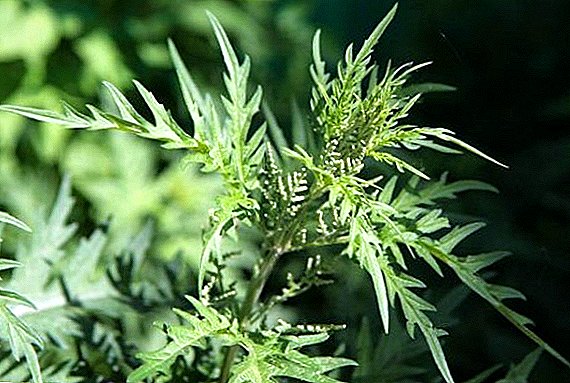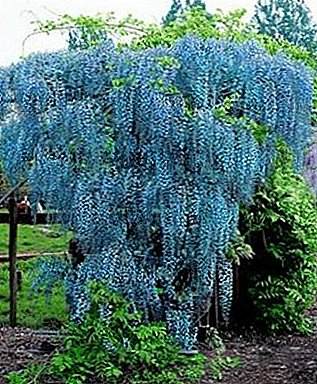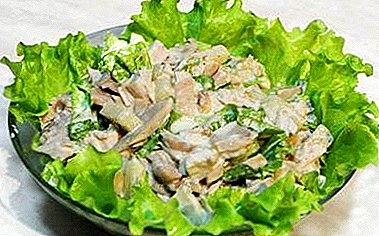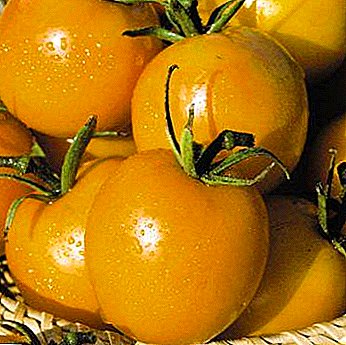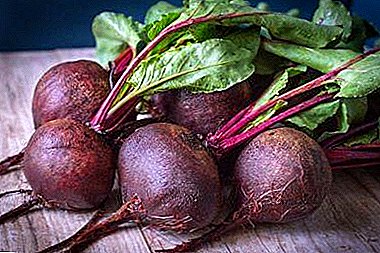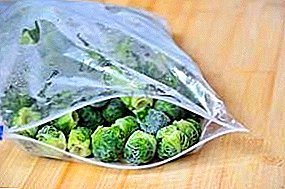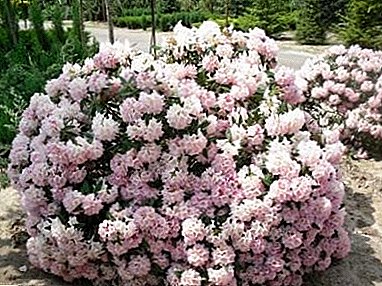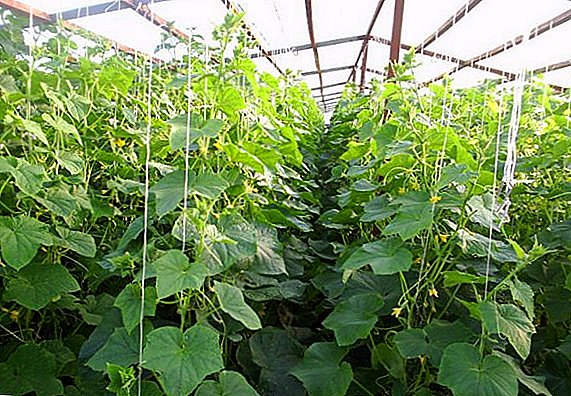 Common cucumber is an annual herb, characterized by multiple lashes, sometimes reaching a length of more than 2 meters. In the open field, the whips spread along the bed, the plant has enough light, so the length of the lashes and their density are not important. In the greenhouse, the lighting will not be enough for the plants, the leaves will turn yellow, the lashes will start to rot, and the fruits will be yellow, hooked and will not give a fill. To avoid this, you need the correct garter of each individual plant - consider in the article how this can be done.
Common cucumber is an annual herb, characterized by multiple lashes, sometimes reaching a length of more than 2 meters. In the open field, the whips spread along the bed, the plant has enough light, so the length of the lashes and their density are not important. In the greenhouse, the lighting will not be enough for the plants, the leaves will turn yellow, the lashes will start to rot, and the fruits will be yellow, hooked and will not give a fill. To avoid this, you need the correct garter of each individual plant - consider in the article how this can be done.
What is needed
Below is a list of arguments in favor of why it is necessary to tie cucumbers in a greenhouse. After reading it, it will be clear that these efforts and the time spent will simplify the further care of each plant, and after it will pay off with interest when the time comes to harvest a bountiful harvest.
- Properly tying cucumbers, saving usable space in the greenhouse. By feeding each lash to grow upwards, it is possible to make room for more short-growing and not demanding light crops (radishes, dill, lettuce, cabbage).
- Full coverage of each shoot and leaflet will contribute to the better development of the cucumber bush, more side shoots will be formed, on which the number of ovaries will increase.
- In addition to the cucumber, another new lash grows out of the leaf billet, and this will be detrimental to the fetus, since there may not be enough nutrients to fill the new cucumber. Conducting the staving, the gardener decides for himself what to leave: a fruit or a new shoot. Therefore, tied bushes easier to pinch.
Find out why to tie tomatoes, how to make a support for clematis and what is clips for garter plants.
- The garter will simplify the process of spraying water and manual pollination of each flower, and subsequently - facilitate the harvest.
- Tied bushes are easier to treat with means for diseases or pests, since each leaf receives a dose of medicine.
- Also, plants do not drown out each other, as it happens when cucumbers are woven along the ground. Therefore, each fruit will develop, being not limited to a matted tangle of lashes and leaves.
- Each cucumber will ripen evenly, will not rot and become infected with pathogenic bacteria, as is the case with fruit contact with the ground, and will also be even in color.
Did you know? The vegetable has its own holiday - the International Day of Cucumber, which is celebrated on July 27th.
Methods
As already mentioned, for a full crop of cucumbers, a sufficient amount of light is needed for each leaf, because it is in the leaf axils that cucumber fruits develop. If the lighting is sufficient, the plant can bear fruit until the very end of the garden season. To achieve this, it is necessary that the bushes are upright. It is very important to take into account exactly how greenhouse plants can be tied up.
Tie peas in the garden.
There are several methods:
- Horizontal Garter.
- Vertical tying.
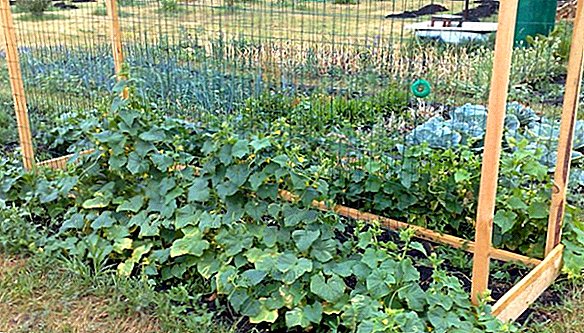
- Grid method.

- The method of "blinding".
Horizontal garter - A very simple way of tying cucumbers for low greenhouses. To do this, two pillars made of wood or metal about 2 meters high can be dug along both edges of the bed, it can be higher. Also, depending on the width of the bed along its entire length, additional supports are also digging in. Then between all supports at a distance of 25 or 30 centimeters a rope or a cord in several rows is stretched horizontally. After that, you need to gently tie each bush to the bottom line.
Set trellis grid for cucumbers.This method has two drawbacks:
- Growing up, cucumber bushes begin to intertwine with each other, because of which their further growth may slow down;
- When the plant reaches the topmost line of ropes, the lash of the bush hangs down and begins to shade the plant itself.
 Therefore, it is necessary to take into account this moment, when backwaters are installed along the edges of the beds, and if possible to set them higher than two meters - of course, if the height of the greenhouse allows. You can also do pruning of elongated processes to stop their further growth.
Therefore, it is necessary to take into account this moment, when backwaters are installed along the edges of the beds, and if possible to set them higher than two meters - of course, if the height of the greenhouse allows. You can also do pruning of elongated processes to stop their further growth.Vertical Garter used in high greenhouses. For this set wooden frame. Its upper level is under the greenhouse ceiling, and the lower part is located on the ground. Between these planks the twine or wire is stretched according to the number of planted cucumber bushes: in this way each plant twists around one twine.
Important! In order not to damage the plant, it is necessary to tie the twine to it without stretching.Often gardeners simplify the task and stretch the vertical rows of ropes directly onto the greenhouse's ceiling frame, after having attached metal hooks to it. The lower ends of the ropes are tied to wooden bars or pegs made of wood, metal (at least 30 cm long) and dredged or hammered into a garden bed. Such bars and wooden pegs should be pre-treated with a saline solution mixed with anti-decay agents or gasoline.
 Then they tie a bush to the ropes. During growth, the plant will wrap around such a support and drag it upwards. The gardener will need to twist the stem under each leaf and periodically tie up the trunk of the cucumber bush to the support for its greater consolidation, otherwise the plant will slide down under the weight of ripening cucumbers. With the vertical method of cucumber garter, plants get the most daylight.
Then they tie a bush to the ropes. During growth, the plant will wrap around such a support and drag it upwards. The gardener will need to twist the stem under each leaf and periodically tie up the trunk of the cucumber bush to the support for its greater consolidation, otherwise the plant will slide down under the weight of ripening cucumbers. With the vertical method of cucumber garter, plants get the most daylight.Another method of tying cucumber bushes both in greenhouses and on open ground is popular. on plastic mesh, it is also called a trellis. This method is suitable for heavily climbing varieties. To do this, you need to install the frame posts on each edge of the greenhouse. They must be dug into the ground to a depth of 30 centimeters and carefully tamp the soil around them. It is also possible to use metal or plastic arcs in the form of a frame. It is necessary that the frame has good strength and durability, because it will act increased load.
Did you know? Cucumber is the first vegetable crop grown in our territories in protected ground (even before the XVIII century). Warm nurseries in light-proof shelters were used for this, and heaps of manure served as soil heating. Later they learned to build classic greenhouses with the same heating. And since the XIX century, greenhouses with glazed frames and stove heating have already been used.In specialized stores for sale there are different variants of trellis nets for garter garden plants, with different heights (from one and a half meters and above), with different shape of cells and diameter. The best option is a grid with cells with a diameter of 10 centimeters. It is not difficult to install it: for this, the canvas needs to be expanded between the vertical supports so that it covers the whole space of the bed. Strong rope or wire should be threaded into the upper part of the net, fixed between the supporting posts.
 It is necessary to begin to mount from the very bottom with metal hooks that are threaded into the cells and driven into the ground by 20-30 centimeters. Especially well to strengthen the middle of the grid, because this part has the maximum load. Each cucumber plant itself clings to the cells with its antennae, so an additional garter with this method is not needed.
It is necessary to begin to mount from the very bottom with metal hooks that are threaded into the cells and driven into the ground by 20-30 centimeters. Especially well to strengthen the middle of the grid, because this part has the maximum load. Each cucumber plant itself clings to the cells with its antennae, so an additional garter with this method is not needed.Familiarize yourself with the sowing rules for self-pollinated and parthenocarpic cucumber varieties.Another advantage of this garter is that cucumbers can be planted on both sides of the trellis grid in a staggered manner so that there is enough space for each bush. The method of fixing the cucumber bush on the net is universal, but more expensive than other methods.
Important! When purchasing a trellis grid, be sure to check it for strength, otherwise, if it breaks already in the greenhouse, all plants can suffer.The method of "blinding" - This is the removal of side shoots, ovaries, flowers and whiskers during the garter. It has long been used by gardeners in the greenhouse cultivation of cucumbers. To do this, the main stem is tied to a vertically stretched twine or net. Then, at a distance of about 30-50 centimeters from the surface of the bed, all side shoots and whiskers are removed from the main stem. Thus, it turns out the zone of "blinding" the trunk to the level of 4 or 6 leaves.
 After a zone of bare bush at a level of 1 meter, side shoots pinch over the first leaf, one ovary should be left. At a height of 50 centimeters after the first pinching, a second one is made, above the second leaf, and two ovaries are left. Above the shoots need to be shortened over the third and fourth leaves, again leaving two ovaries. This method of growing and garter cucumber plants contributes to a more active growth of weak fruit ovaries, as well as strengthening the main stem and root system.
After a zone of bare bush at a level of 1 meter, side shoots pinch over the first leaf, one ovary should be left. At a height of 50 centimeters after the first pinching, a second one is made, above the second leaf, and two ovaries are left. Above the shoots need to be shortened over the third and fourth leaves, again leaving two ovaries. This method of growing and garter cucumber plants contributes to a more active growth of weak fruit ovaries, as well as strengthening the main stem and root system.Learn how to grow cucumber varieties such as: “Courage”, “Graceful”, “Spring”, “Spino”, “Cedric”, “Zozulya”, “German”, “Nezhinsky”, “Competitor”.Another plus is that sufficient air circulation is provided near the roots, which will save the plants from some diseases and rotting. It would not be superfluous to remind that the cucumber garter should be carried out by any method chosen, as early as possible, at the growth stage of the second or third leaf, until the plant overgrown and intertwined with others. Otherwise, if they are separated, not only regrown side lashes can be damaged, but also central ones.
What we need
Before you start cucumber garters in greenhouses, you need to decide what tools and materials you may need - it is important to use exactly those that can securely fix the stems to the supports. Garter cucumbers carried with the help of such devices:
- frame poles of wood or metal, 2 meters or more in height;
- strong twine, wire or rope;
- plastic mesh;
- metal hooks for tying twine;
- metal hooks for fixing the mesh in the garden;
- wooden or metal pegs for fixing twine supports in the ground;
- suspender material: plastic industrial garters made of soft material, twine, strips of soft cotton fabric (15-20 cm long each);
- wooden bars for fixing twine poles in the ground;
- hammer, nails, pliers.
Important! Cannot be usedl for supports instead of twine fishing line or wire, as they will cut, severely pinch and injure the stems.
When to hold a garter
Tying cucumbers in a greenhouse in a timely manner can prevent plant death, because younger plants are easier to tie up - they are more resilient. The garter of cucumbers in any chosen way must be carried out as early as possible, at the growth stage of the second or third leaf, until the plant has outgrown and intertwined with others. Otherwise, if they are separated, not only regrown side lashes can be damaged, but also central ones.  The plant at this point should reach 36 centimeters and have six full leaves. As mentioned above, after the garter you need to activate the side shoots of the plant, because they will grow the greatest number of fruits. At a distance of 36 centimeters from the ground to remove all the leaves and inflorescences. When cucumber garter should be maintained at an angle of 60 degrees between the main stem and secondary shoots.
The plant at this point should reach 36 centimeters and have six full leaves. As mentioned above, after the garter you need to activate the side shoots of the plant, because they will grow the greatest number of fruits. At a distance of 36 centimeters from the ground to remove all the leaves and inflorescences. When cucumber garter should be maintained at an angle of 60 degrees between the main stem and secondary shoots.
Grow cucumbers in the open field, on the windowsill, in bags and on the balcony.Tying each shoot to a support or a grid, it is impossible to pinch a knot of garter material on the stem. The loop must be formed in such a way that it does not affect the growth of the trunk in width. As you can see, growing cucumbers in greenhouse conditions is easy, but it requires the creation of suitable conditions. Thanks to the advice from our article, you can always easily cope with all the features of the garter bushes of these vegetables in the course of growing, and the reward will be a good and bountiful harvest.




